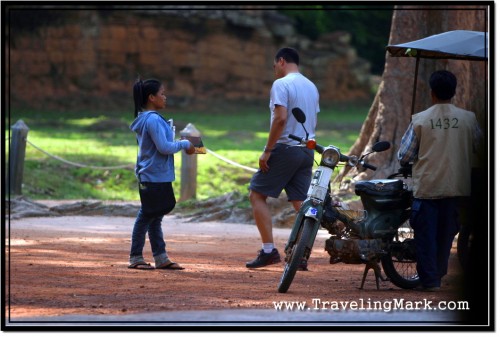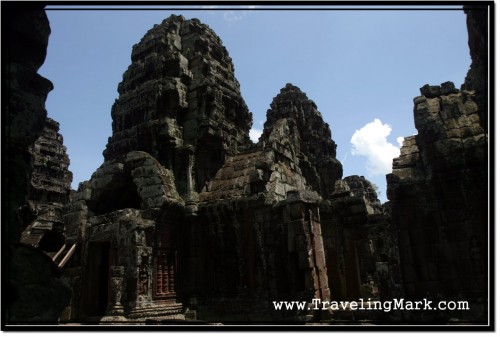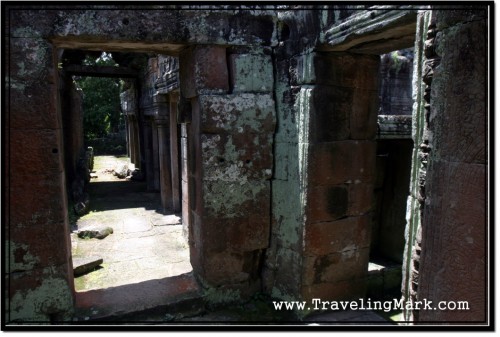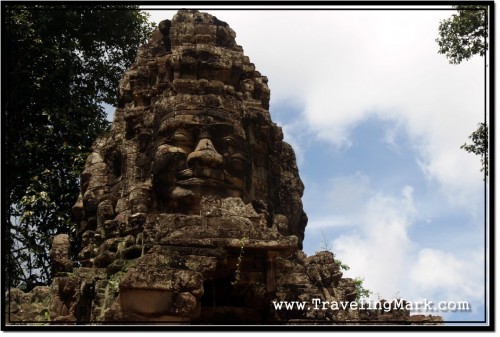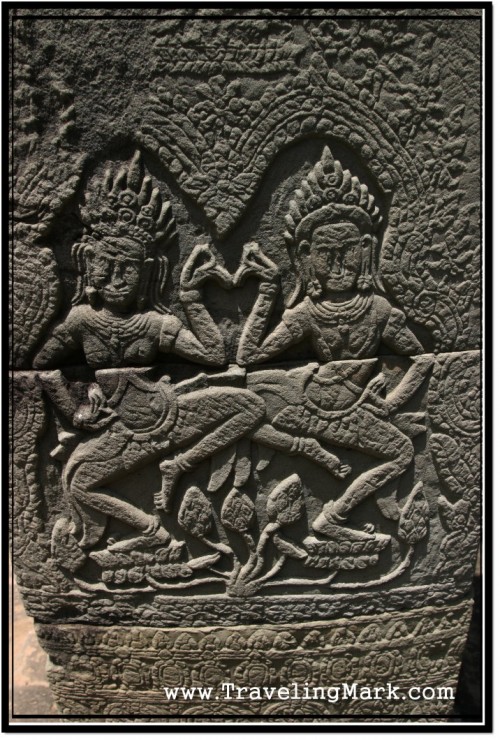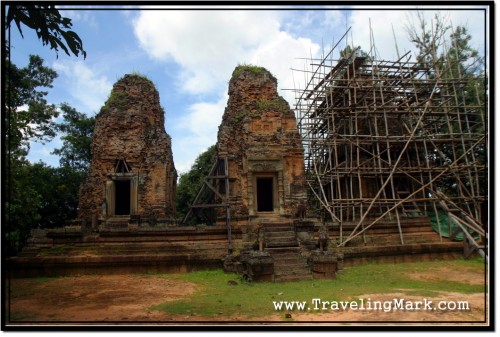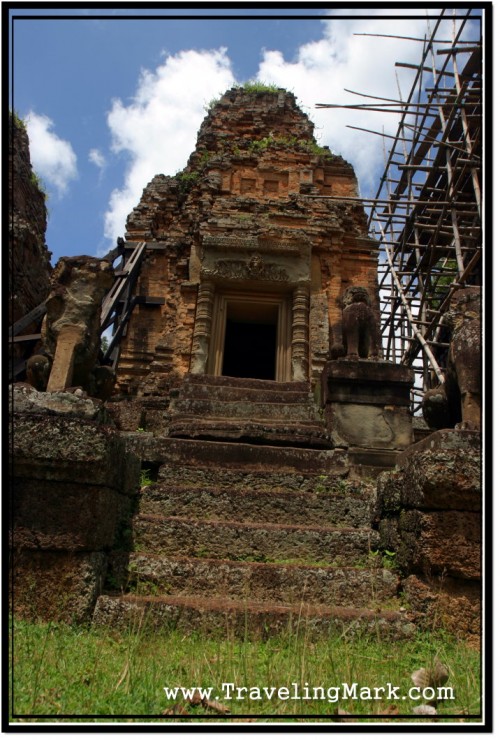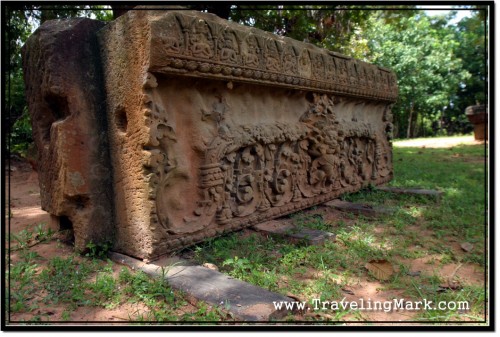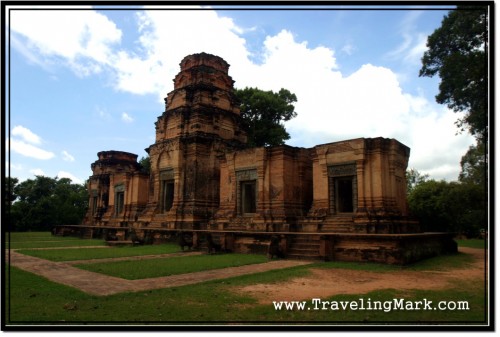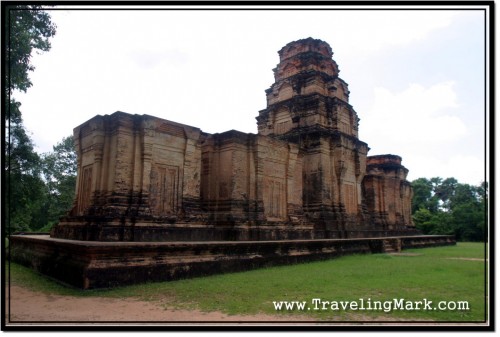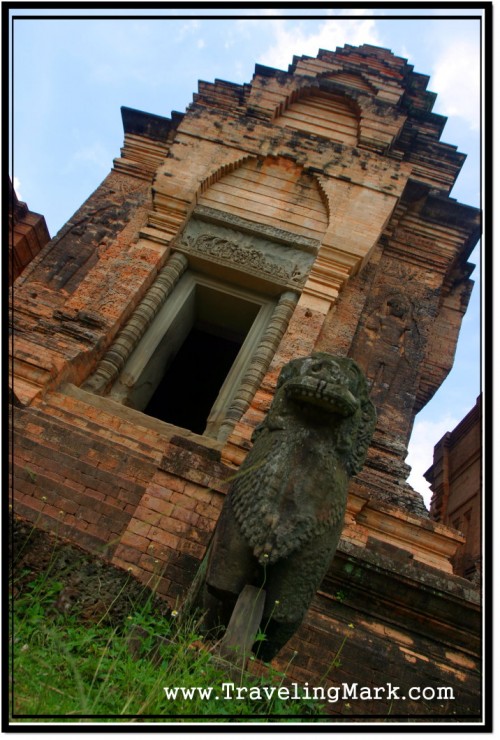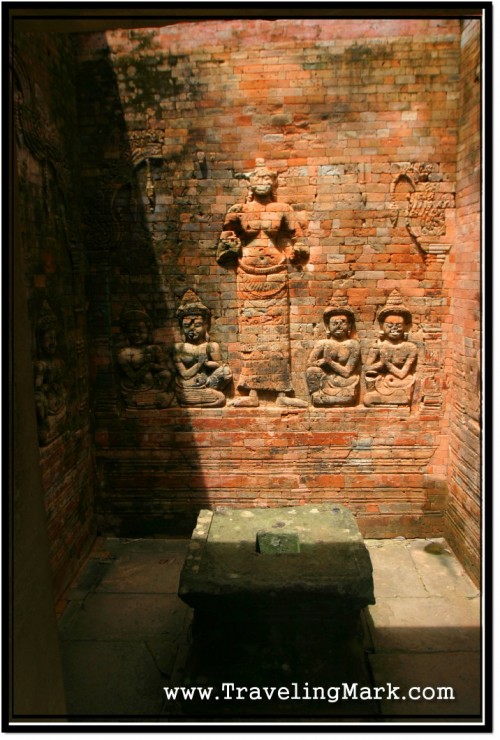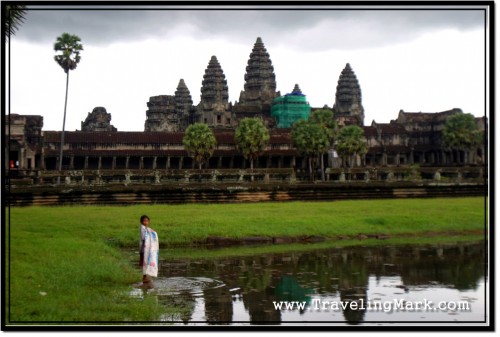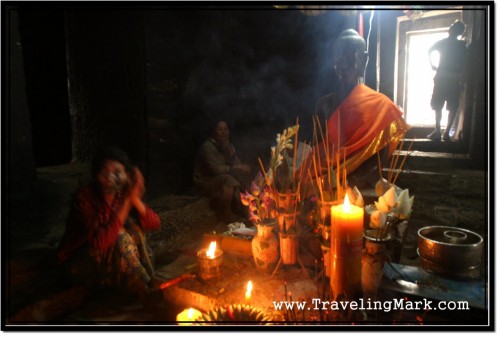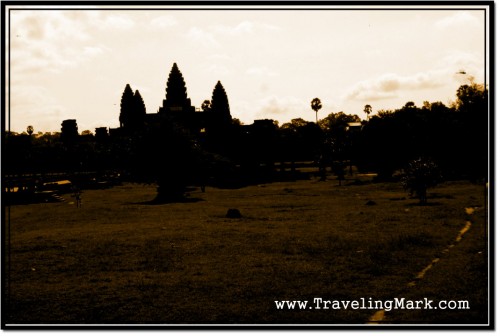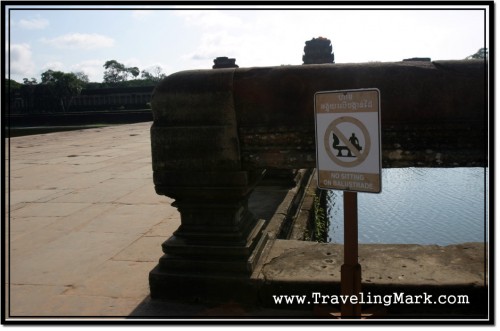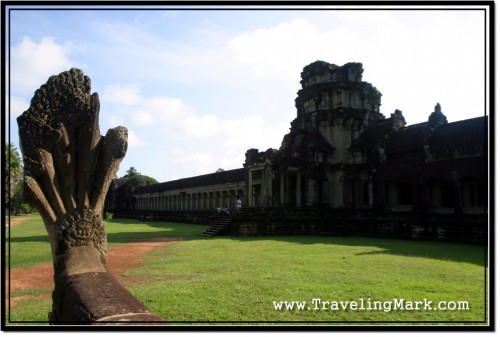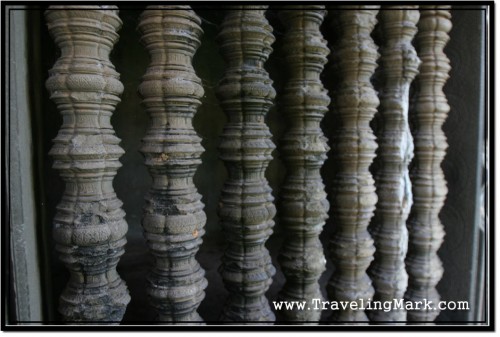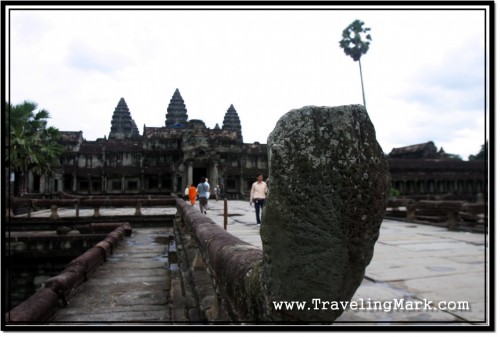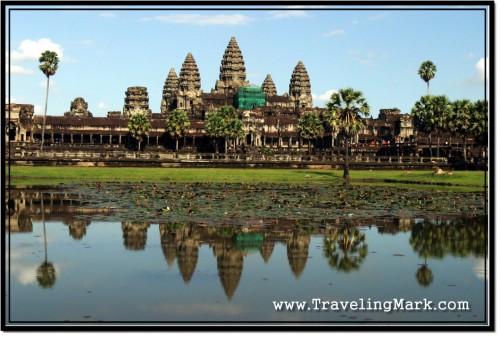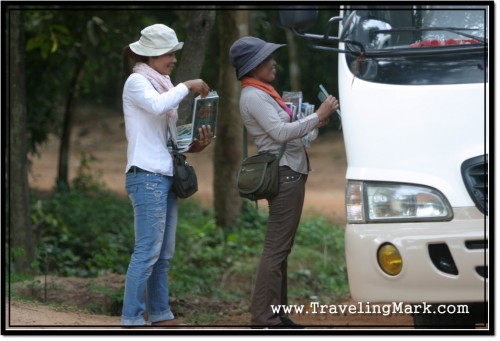Ta Prohm is the temple that originally got me interested in Angkor. If it weren’t for Ta Prohm, I wouldn’t have probably landed in Cambodia right at the beginning of my round the world journey. When I saw photos of strong interconnection between ancient stones and wild growing jungle, I was sold. The fact that Angelina Jolie starred Tomb Rider was filmed at Ta Prohm had little influence over my decision to visit the temple ruins as I haven’t even seen the movie (I have always considered Angelina Jolie to be the ugliest and the most talent lacking actress in Hollywood).
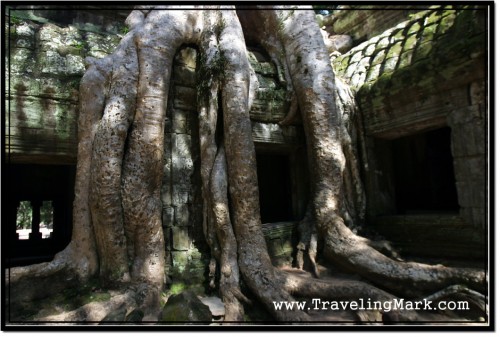
As is the case of Bayon, Banteay Kdei and other major Angkorian era temples, Ta Prohm was also built during the reign of the builder king Jayavarman VII. However, unlike with most other Angkor area temples, Ta Prohm has not been cleaned off of intertwined jungle and this fact alone has become one of its mightiest selling points that attracts lots of visitors. Monstrous silk trees growing out of the ruins became part of the structures to the point that one cannot be without another.
According to the inscription on the foundation stele, Ta Prohm was consecrated in 1186 AD. Originally named Rajavihara (Royal Temple), Ta Prohm was one of the first temples with which the god king Jayavarman VII embarked on its immense mission of temple building. The sanskrit inscription also provides colorful details about how impressive Ta Prohm must have been during its time. From it the archaeologists learned that the temple housed the following:
- 500kg of Golden Dishes
- 35 Diamonds
- 4,540 Precious Stones
- 40,620 Pearls
- 867 Veils from China
- 523 Parasols
- 512 Silk Beds
Whether these numbers truly reflected the content of the temple grounds or were vastly exaggerated to make king Jayavarman VII larger than life is left for speculations. As for the population in and around Ta Prohm, the inscription tells us that the temple was home to the following:
- 18 High Priests
- 615 Apsara Dancers
- 2,740 Officials
- 2,202 Assistants
- 79,365 Total Maintenance Staff
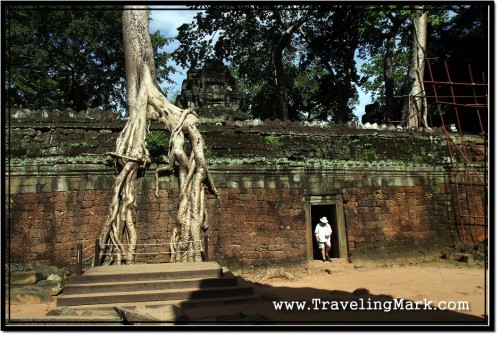
Prajnaparamita (the perfection of wisdom) was the principal deity of Ta Prohm and Jayavarman VII had her carved in the likeness of his mother. The statue of Prajnaparamita was housed in the central sanctuary while 260 lesser divinities that surrounded her were housed in additional sanctuaries of the temple complex.
I visited Ta Prohm in September 2009 and while at that time the temple was said to have been in the same state as when it was taken over by the Ecole Francaise d’Extreme Orient at the beginning of the 20th century, the presence of manmade structure supports and off-limit areas due to on-going restoration suggested that Ta Prohm is under ongoing maintenance efforts and may end up looking entirely different a year from when I paid the visit.
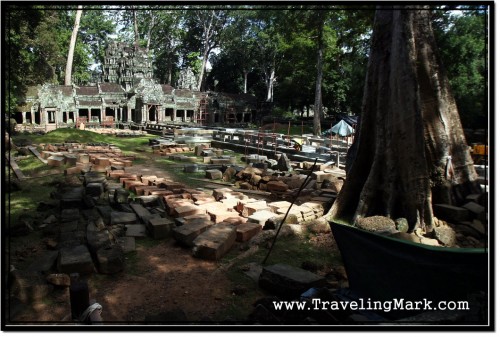
Unlike Angkor Wat or Bayon, Ta Prohm is not a temple mountain, meaning it doesn’t contain a multiple level pyramid but rather has all of its galleries at the ground level. Like most Buddhist temples, Ta Prohm was built to face the east with the temple proper set closer to the west wall. Each of the walls of the rectangular outer enclosure contains a gopura (entrance gate), but south and north gopuras were purposefully left overgrown with jungle so access can only be made via the east or the west gopura (where touts concentrate in large numbers).
Central sanctuary is surrounded by five enclosing walls of various state of collapse, but each containing impressive looking trees growing on top of them. The ruinous state of enclosing walls as well as the presence of randomly placed buildings (libraries and halls) many of which were added at a later date make navigating through the temple a bit confusing. Hills of piled up stones that once formed Ta Prohm can be seen scattered throughout the temple grounds standing witness to the ruinous state of what must have been an epic structure back in the day.
Ta Prohm Bas Reliefs
The reign of great builder Jayavarman VII was followed by the reign of his successor, the great destroyer Jayavarman VIII who made it his mission to destroy Buddhist relics created during the reign of his famous predecessor. Ta Prohm was not spared of this destructive onslaught so many of the carvings and bas reliefs were either removed or defaced. Still, some original carvings of Apsara dancers and bas reliefs of scenes from Buddhist mythology did survive and can still be found on temple walls. I personally was more interested in the jungle growing on top of the temple structure than the bas reliefs so I didn’t spend much time admiring what’s still left after the reign of Jayavarman VIII.

Ta Prohm Trees
That’s exactly why I was there. That’s actually exactly why I went to Cambodia in the first place. The sight of monstrous trees growing out of the centuries old ruins intertwined together to the point that you cannot remove one without destroying the other. Large Silk-Cotton Trees and Thitpoks dominate the overgrowth with smaller Strangler Figs and Golden Apple Trees coupling together for a perfect full picture. Endless roots of the trees engulf the stones in an impenetrable maze that on one hand broke the structures out of form, to keep it tightly together on another.
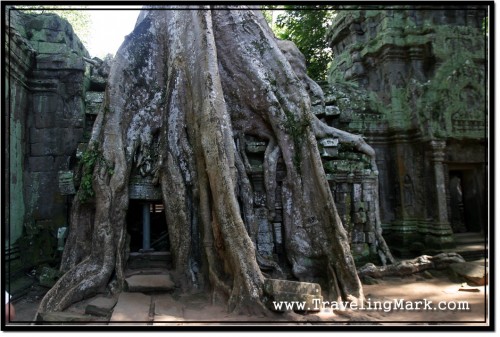
Ta Prohm was without doubt the highlight of my stay in Cambodia. The most impressive of all the ancient Angkor temples (in my eyes), Ta Prohm delivered the awe just the way I expected. This was the one place I really wanted to visit ever since I first saw the pictures of those trees growing over the walls and other structures built almost a millennium ago and completely abandoned a few centuries later. It’s only saddening that such impressive piece of ancient history is under control of such ungrateful country as Cambodia.
More photos of the temple are on the Ta Prohm Photo Gallery page.
